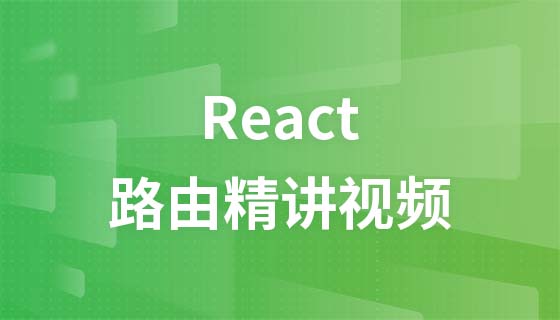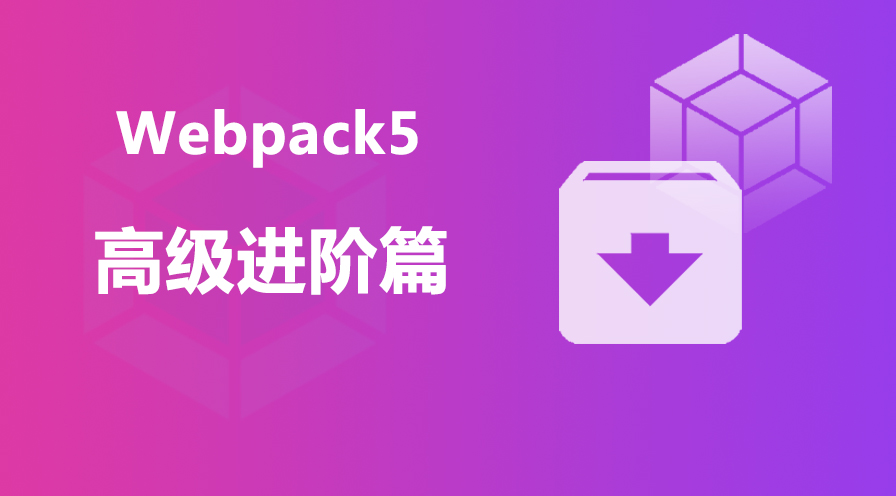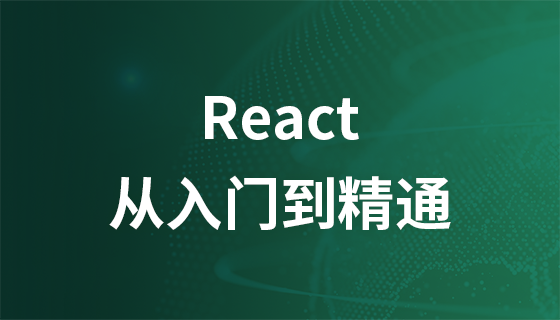本篇文章主要的讲述了关于react项目开发需要注意的哪些情况,想知道的同学就赶紧点进来看吧,现在就一起来阅读本篇文章吧
对react项目开发,我大概对它的知识点进行了分类,主要由以下几个部分组成。
import React,{ Component } from 'react';import { render } from 'react-dom';import Main from './components/Main';
render(<Main />,document.getElementById('app'));import React,{ Component } from 'react';
export default class Main extends Component{
render(){ return (
<p>
组件
</p>
)
}
}父组件传给子组件靠props
import React,{ Component } from 'react';
import { render } from 'react-dom';class Main extends Component{
render(){ return (
<p>
<Child title="我是父组件"/>
</p>
)
}
}class Child extends Component{
render(){ return(
<h2>{this.props.title}</h2>
)
}
}
render(<Main />,document.getElementById('app'));子组件传给父组件靠事件 子组件传递给父组件的过程描述,父组件传递给子组件一个函数,子组件执行这个函数,然后把子组件自己的值可以通过穿参的方式传递进去。然后父组件接受到这个值,进行相应的操作。
import React,{ Component } from 'react';
import { render } from 'react-dom';class Main extends Component{
constructor(props){ super(props); this.state = {
value:'init value'
}
}
render(){ return (
<p>
<p>{this.state.value}</p>
<Child onClick={(value)=>{this.setState({value:value})}}/>
</p>
)
}
}class Child extends Component{
render(){ return(
<button onClick={()=>this.props.onClick("子组件的值")}>点击传值</button>
)
}
}
render(<Main />,document.getElementById('app'));webpack的配置一般分为这么几个部分,entry、output、plugin、devServer、module等。 entry告诉webpack入口在哪。 output告诉webpack将来把文件打包到哪。 plugin代表一些其他的操作,如打开浏览器、文件压缩等处理。 devServer代表开发的时候启动一个本地服务器 module代表各种loader用来解析你的代码。
一个普通的webpack配置文件如下:
var webpack = require('webpack');module.exports = { entry:"./src/index.js", output:{ path:'public', filename:'bundle.js'
}, devServer:{ historyApiFallback:true, hot:true, inline:true
}, plugins:[ new webpack.DefinePlugin({ 'process.env.NODE.ENV': "development"
}), new webpack.HotModuleReplacementPlugin(), new OpenBrowserPlugin({ url: 'http://localhost:8080'
})
], module:{ loaders:[{ test:/\.js[x]?$/, exclude:/node_modules/, loader:'babel-loader', query:{ presets:['es2015','react','stage-1']
}
},{ test:/\.css$/, loaders:['style',css]
},{ test:/\.(png|jpg)$/, loader:"url-loader"
}]
}
}在 react 中,es6语法一般是要会一些的,针对 react,关于es6一些基本的使用以及写法,这里列出来。
import引入一个东西
import webpack from 'webpack';import React from 'react';import { Component } from 'react';其中使用“{}”引入的变量是那个文件中必须存在的变量名相同的变量。
不使用“{}”引入的变量是那个文件中export default默认抛出的变量,其中变量名可以不一样。
export抛出一个东西。
function a(){ console.log(1);
}let b = 1;export a;export b;export default a;其中export可以抛出多个,多次使用。
export default只能使用一个,表示默认抛出。
class的本质是一个申明类的关键字。它存在的意义和var、let、const、function等都是一样的。
使用方式:
class Main{}extends代表继承,使用方式:
class Main extends Component{}constructor代表构造函数,super是从父类继承属性和方法。
class Main extends Component{
constructor(props){ super(props)
}
}分三个状态
Mounting
Updating
Unmounting
Mounting阶段–一般在这个阶段生命周期函数只会执行一次
constructor()
componentWillMount()
componentDidMount()
render()
Updating阶段–会执行多次
componentWillReceiveProps()
shouldComponentUpdate()
render()
componentDidUpdate()
Unmountint阶段–组件卸载期
componentWillUnmount()
这就是现阶段的组件生命周期函数。之前还有两个生命周期函数叫 getDefaultProps 以及 getInitialState。
但是它们的功能现在被constructor代替。
组件的生命周期使用场景
constructor
常见的一个使用方式就是state的初始化
constructor(props){
super(props);
this.state = {
value:''
}}componentWillMount
进行一些初始化的操作。或者进行一些数据加载。 <br>componentWillMount(){ <br>
this.fetchData(); <br>} <br>
componentDidMount
常见场景就是数据请求
componentWillMount(){ this.fetchData();
}render
一个react组件中必须包含的函数,返回jsx语法的dom元素
render(){ return (
<p>123</p>
)
}componentWillReceiveProps
在props传递的时候,可以在render之前进行一些处理。不会触发二次setState。
只有一个参数。代表的是props对象
shouldComponentUpdate
有两个参数,分别代表props和state
必须返回一个true或者false。否则会语法报错。
在进行一些性能优化的时候非常有用
componentDidUpdate
组件加载完毕,进行某些操作
componentWillUnmount
最常见的场景,对组件附加的setInterval、setTimeout进行清除。 <br>componentWillUnMount(){ <br>
clearInterval(this.timer); <br>} <br>
常见的使用场景是,根据传递不同的props,渲染不同的界面数据。 项目比较复杂的情况下,一个页面的值发生变化,就要导致另一个页面的值发生改变,这样需要通过props的方式来告知对方,你的值发生改变。让另外一个组件更新dom。需要使用这个周期函数进行监听接受到的props,从而根据这个props进行相应的数据处理。
这个函数的返回值是一个布尔值。返回一个true。 返回一个false的情况下,它的的状态不会进行更新。
immutable.js
在react中,可以使用传统的XMLHttpRequest对象进行数据请求。
var xhr = new XMLHttpRequest();
xhr.open(type, url, true);
xhr.onReadyStateChange = ()=>{
if (xhr.readyState == 4 && xhr.status == 200) {
sucess(xhr.responseText);
}
}
promise是es6提出的数据请求方式。目前很多浏览器还没有实现。但是有promise的polyfill,如blueBird.js
基本的使用方式是:Promise对象
const Promise = require(`../vendor/bluebird/bluebird.js`);let get = (url,data) => { return new Promise((resolve, reject) => { if(res){
resolve(res);
}else if(err){
reject(err);
}
})}fetch的基本使用方式:
fetch("http://homework.shsoapp.com:80/ttzyservice/task/getTaskSubjectList",{ method: 'POST', headers: { 'Content-Type': 'application/x-www-form-urlencoded'
}, mode: 'cors', body: "page=1&rows=10"
}).then(res =>{ console.log(res); return res.json()
}).then(res => { console.log(res);
})基本使用
import { BrowserRouter as Router, Link, Route,Switch} from 'react-router-dom';
export default class Main extends Component{
render(){ return(
<Router>
<p>
<Switch>
<Route path='/' component={page1}>
<Route path='/home' component={page2}>
<Route path='/age' component={page3}>
</Switch>
</p>
</Router>
)
}
}actions
const ADD_TASK = "ADD_TASK";const ADD_CONTENT = "ADD_CONTENT";
export function addtask(task){
return {
type: ADD_TASK,
task
}
}
export function addContent(content){
return {
type: ADD_CONTENT,
content
}
}reducers
import { addtask,addContent } from 'actions';export function(state = '',action){
switch (action.type){ case ADD_TASK: return action.task; break; case ADD_CONTENT: return action.content; break; default: return state;
}
}
对react项目开发,我大概对它的知识点进行了分类,主要由以下几个部分组成。
import React,{ Component } from 'react';import { render } from 'react-dom';import Main from './components/Main';
render(<Main />,document.getElementById('app'));import React,{ Component } from 'react';
export default class Main extends Component{
render(){ return (
<p>
组件
</p>
)
}
}父组件传给子组件靠props
import React,{ Component } from 'react';
import { render } from 'react-dom';class Main extends Component{
render(){ return (
<p>
<Child title="我是父组件"/>
</p>
)
}
}class Child extends Component{
render(){ return(
<h2>{this.props.title}</h2>
)
}
}
render(<Main />,document.getElementById('app'));子组件传给父组件靠事件 子组件传递给父组件的过程描述,父组件传递给子组件一个函数,子组件执行这个函数,然后把子组件自己的值可以通过穿参的方式传递进去。然后父组件接受到这个值,进行相应的操作。
import React,{ Component } from 'react';
import { render } from 'react-dom';class Main extends Component{
constructor(props){ super(props); this.state = {
value:'init value'
}
}
render(){ return (
<p>
<p>{this.state.value}</p>
<Child onClick={(value)=>{this.setState({value:value})}}/>
</p>
)
}
}class Child extends Component{
render(){ return(
<button onClick={()=>this.props.onClick("子组件的值")}>点击传值</button>
)
}
}
render(<Main />,document.getElementById('app'));webpack的配置一般分为这么几个部分,entry、output、plugin、devServer、module等。 entry告诉webpack入口在哪。 output告诉webpack将来把文件打包到哪。 plugin代表一些其他的操作,如打开浏览器、文件压缩等处理。 devServer代表开发的时候启动一个本地服务器 module代表各种loader用来解析你的代码。
一个普通的webpack配置文件如下:
var webpack = require('webpack');module.exports = { entry:"./src/index.js", output:{ path:'public', filename:'bundle.js'
}, devServer:{ historyApiFallback:true, hot:true, inline:true
}, plugins:[ new webpack.DefinePlugin({ 'process.env.NODE.ENV': "development"
}), new webpack.HotModuleReplacementPlugin(), new OpenBrowserPlugin({ url: 'http://localhost:8080'
})
], module:{ loaders:[{ test:/\.js[x]?$/, exclude:/node_modules/, loader:'babel-loader', query:{ presets:['es2015','react','stage-1']
}
},{ test:/\.css$/, loaders:['style',css]
},{ test:/\.(png|jpg)$/, loader:"url-loader"
}]
}
}在 react 中,es6语法一般是要会一些的,针对 react,关于es6一些基本的使用以及写法,这里列出来。
import引入一个东西
import webpack from 'webpack';import React from 'react';import { Component } from 'react';其中使用“{}”引入的变量是那个文件中必须存在的变量名相同的变量。
不使用“{}”引入的变量是那个文件中export default默认抛出的变量,其中变量名可以不一样。
export抛出一个东西。
function a(){ console.log(1);
}let b = 1;export a;export b;export default a;其中export可以抛出多个,多次使用。
export default只能使用一个,表示默认抛出。
class的本质是一个申明类的关键字。它存在的意义和var、let、const、function等都是一样的。
使用方式:
class Main{}extends代表继承,使用方式:
class Main extends Component{}constructor代表构造函数,super是从父类继承属性和方法。
class Main extends Component{
constructor(props){ super(props)
}
}分三个状态
Mounting
Updating
Unmounting
Mounting阶段–一般在这个阶段生命周期函数只会执行一次
constructor()
componentWillMount()
componentDidMount()
render()
Updating阶段–会执行多次
componentWillReceiveProps()
shouldComponentUpdate()
render()
componentDidUpdate()
Unmountint阶段–组件卸载期
componentWillUnmount()
这就是现阶段的组件生命周期函数。之前还有两个生命周期函数叫 getDefaultProps 以及 getInitialState。
但是它们的功能现在被constructor代替。
组件的生命周期使用场景
constructor
常见的一个使用方式就是state的初始化
constructor(props){
super(props);
this.state = {
value:''
}}componentWillMount
进行一些初始化的操作。或者进行一些数据加载。 <br>componentWillMount(){ <br>
this.fetchData(); <br>} <br>
componentDidMount
常见场景就是数据请求
componentWillMount(){ this.fetchData();
}render
一个react组件中必须包含的函数,返回jsx语法的dom元素
render(){ return (
<p>123</p>
)
}componentWillReceiveProps
在props传递的时候,可以在render之前进行一些处理。不会触发二次setState。
只有一个参数。代表的是props对象
shouldComponentUpdate
有两个参数,分别代表props和state
必须返回一个true或者false。否则会语法报错。
在进行一些性能优化的时候非常有用
componentDidUpdate
组件加载完毕,进行某些操作
componentWillUnmount
最常见的场景,对组件附加的setInterval、setTimeout进行清除。 <br>componentWillUnMount(){ <br>
clearInterval(this.timer); <br>} <br>
常见的使用场景是,根据传递不同的props,渲染不同的界面数据。 项目比较复杂的情况下,一个页面的值发生变化,就要导致另一个页面的值发生改变,这样需要通过props的方式来告知对方,你的值发生改变。让另外一个组件更新dom。需要使用这个周期函数进行监听接受到的props,从而根据这个props进行相应的数据处理。
这个函数的返回值是一个布尔值。返回一个true。 返回一个false的情况下,它的的状态不会进行更新。
immutable.js
在react中,可以使用传统的XMLHttpRequest对象进行数据请求。
var xhr = new XMLHttpRequest();
xhr.open(type, url, true);
xhr.onReadyStateChange = ()=>{
if (xhr.readyState == 4 && xhr.status == 200) {
sucess(xhr.responseText);
}
}
promise是es6提出的数据请求方式。目前很多浏览器还没有实现。但是有promise的polyfill,如blueBird.js
基本的使用方式是:Promise对象
const Promise = require(`../vendor/bluebird/bluebird.js`);let get = (url,data) => { return new Promise((resolve, reject) => { if(res){
resolve(res);
}else if(err){
reject(err);
}
})}fetch的基本使用方式:
fetch("http://homework.shsoapp.com:80/ttzyservice/task/getTaskSubjectList",{ method: 'POST', headers: { 'Content-Type': 'application/x-www-form-urlencoded'
}, mode: 'cors', body: "page=1&rows=10"
}).then(res =>{ console.log(res); return res.json()
}).then(res => { console.log(res);
})基本使用
import { BrowserRouter as Router, Link, Route,Switch} from 'react-router-dom';
export default class Main extends Component{
render(){ return(
<Router>
<p>
<Switch>
<Route path='/' component={page1}>
<Route path='/home' component={page2}>
<Route path='/age' component={page3}>
</Switch>
</p>
</Router>
)
}
}actions
const ADD_TASK = "ADD_TASK";const ADD_CONTENT = "ADD_CONTENT";
export function addtask(task){
return {
type: ADD_TASK,
task
}
}
export function addContent(content){
return {
type: ADD_CONTENT,
content
}
}reducers
import { addtask,addContent } from 'actions';export function(state = '',action){
switch (action.type){ case ADD_TASK: return action.task; break; case ADD_CONTENT: return action.content; break; default: return state;
}
}以上就是React项目开发你需要知道哪些?react项目开发具体事项(附实例)的详细内容,更多请关注php中文网其它相关文章!

每个人都需要一台速度更快、更稳定的 PC。随着时间的推移,垃圾文件、旧注册表数据和不必要的后台进程会占用资源并降低性能。幸运的是,许多工具可以让 Windows 保持平稳运行。




Copyright 2014-2025 https://www.php.cn/ All Rights Reserved | php.cn | 湘ICP备2023035733号